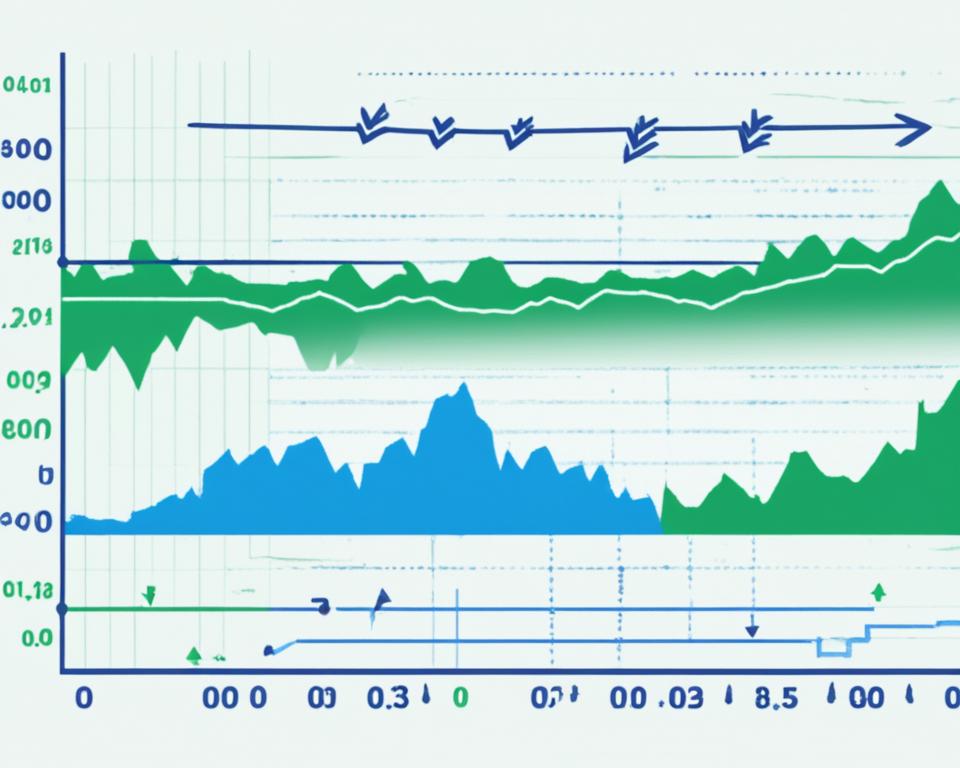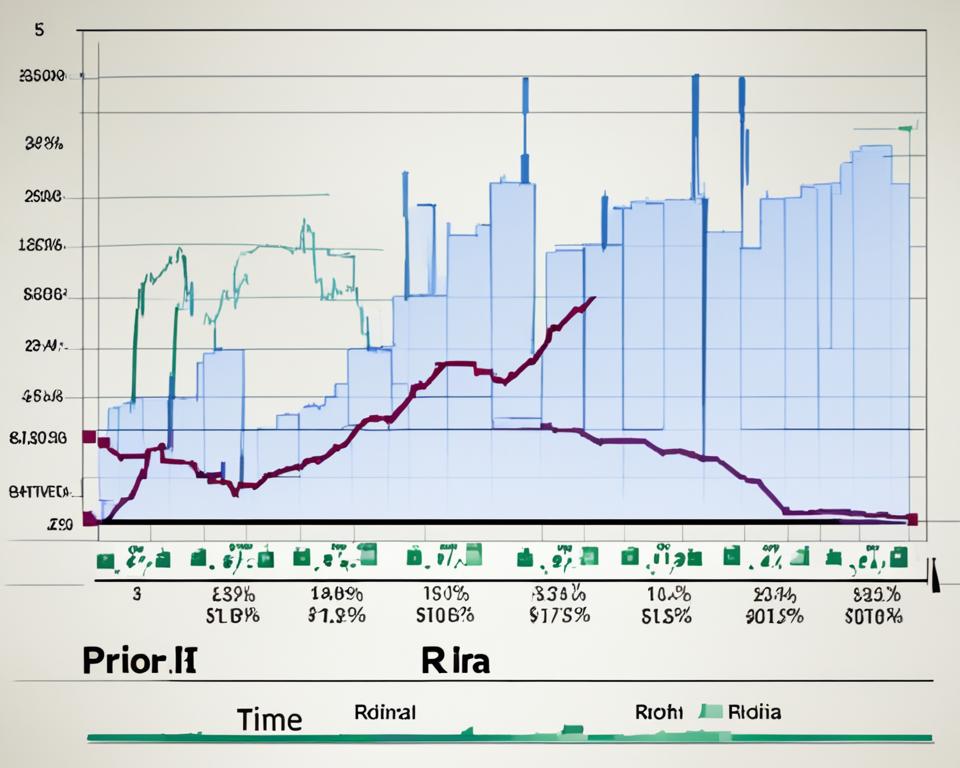For many, understanding how changes in interest rates affect dividend stock prices can seem like a daunting task. However, it’s a vital part of investing. Since 1926, dividends have added a significant piece to the returns of equity investors in the U.S., nearly a third to be precise, with the balance made up by capital gains. Markets like utilities, telecommunications, and real estate investment trusts (REITs) which are known for their sensitivity to varying interest rates, illustrate the relationship between interest rates and dividend stock returns in a nuanced manner.
When interest rates see an upswing, share prices in these market sectors often taper off. The reason for this is the enhanced cost of financing debt. But when interest rates head south, a counter effect can be noticed—a hike in share prices. Why? Because the present value of future earnings sees an increase.
Key Takeaways
- Interest rates and dividend stock prices are interconnected.
- A hike in interest rates often leads to a drop in market sectors like utilities and telecommunications.
- On the other hand, a fall in interest rates could result in rising share prices.
- The present value of future earnings of shares can increase with decreasing interest rates.
- The understanding of how changes in interest rates affect dividend stocks is a fundamental asset in the field of investing.
Understanding the Bond Between Interest Rates and Dividend Stocks
The effects of interest rate changes on dividend stock values have long been the subject of rigorous analysis and discussion. Much like any other asset in the market, dividend stocks also move in response to shifts in macroeconomic conditions, particularly changes in interest rates. It’s crucial, therefore, for investors to comprehend this dividend stocks correlation with interest rates and how it impacts their portfolios.
The Role of Dividends in Total Equity Return
Dividends are payments that corporations make from their after-tax profits. Investors often view this cash inflow as a major constituent of their comprehensive equity return. The contribution of dividends to total returns can be quite substantial and is often more predictable than capital gains, hence its attractiveness to investors, especially during volatile market periods.
Demystifying Dividend Payout Ratios
Understanding how a company’s profits correlate with its dividends provides valuable insights into the entity’s financial health and the sustainability of its dividend policy. The dividend payout ratio is a key metric in this regard. It mirrors the fraction of earnings a firm disburses as dividends. The ratio can fluctuate significantly across different sectors. For instance, industries like utilities and pipelines often exhibit payout ratios above 80%, while other sectors may have ratios below 20%. A sustainable dividend payout ratio hints that a corporation can uphold its dividends over long periods without exerting undue strain on its profitability.
In summary, understanding the intricate bond between dividends, dividend payout ratios, and interest rates is crucial for managing investments in dividend-paying stocks. It helps investors make informed decisions and modify their tactics as per market scenarios, thereby ensuring optimum returns despite changes in interest rates.
Analyzing Interest Rate Sensitivity in High Dividend Yield Stocks
In an interconnected economic arena, sensitivity to interest rates can be quite nuanced, significantly affecting sectors famous for high dividend yields. Typically, sectors with substantial debt burdens, such as utilities, telecommunications, and real estate investment trusts (REITs), demonstrate a rather immediate response to interest rate adjustments. In the scope of this article, let’s delve deeper and understand how adjustments in interest rates impact dividend stocks, especially those within the high-yield sectors.
Interest Rates Impact on Utilities, Telecoms, and REITs
A rise in interest rates often results in enlarged debt-servicing costs. If these sectors cannot mitigate such costs with simultaneous growth in revenue, their profitability could diminish. Post-tax profits sensitive to interest rate changes are the bedrock upon which dividends are paid. Therefore, increasing interest rates can directly impact the income of these dividend-paying firms and, by extension, the dividend payouts themselves.
This sensitivity is further compounded for companies with extensive foreign operations. A stronger US dollar, often a by-product of rising U.S. interest rates, could reduce their overseas earnings. Additionally, lower commodity prices tied to that stronger dollar could impact these companies’ profitability and dividend payouts.
Understanding the Impact on Corporate Profitability
When it comes to dividend stocks, corporate profitability is a crucial factor. It often determines a company’s ability to maintain or increase dividend payments. However, increased interest rates might lead to reduced profitability, especially for companies in sectors like telecommunications, utilities, and REITs – traditionally heavy borrowers. These corporations may find their profitability eroded by higher debt service expenses.
The ability to maintain dividend payouts amid such interest rate adjustments depends on a firm’s financial flexibility, the pricing power of its products or services, and the overall health of its business model. Below is a summary of the potential impacts of interest rate adjustments on the dividend stock performance of various high-yield sectors:
| High Yield Sectors | Potential Impact |
|---|---|
| Utilities | Increased debt servicing costs could potentially decrease dividend payouts |
| Telecommunications | Higher interest rates could negatively affect profitability and dividends |
| Real Estate Investment Trusts (REITs) | May struggle to maintain dividend payouts amidst increased financing costs |
In summary, while interest rate adjustments play a crucial role in shaping an economy’s direction, their impact on dividend stocks is much more nuanced. Notably, the sectors characterized by high dividend yields and significant debt loads display heightened sensitivity to these shifts. Therefore, investors aiming to build a solid dividend portfolio should closely monitor the interest rate environment and its potential impact on their holdings.
Dissecting the Effects of Rising Interest Rates on Dividend Stocks
As interest rates ascend, navigating the labyrinthine world of dividend stock investment grows increasingly complex. The allure of these yield-providing equities may wane, unable to compete with the heightened appeal of alternative yield sources like Treasury bills and certificates of deposit.

Understanding how interest rate fluctuations influence dividend stock prices is essential for shrewd and strategic investment decision-making. Notice a pattern in the relationship between interest rates and dividend stocks – as rates rise, dividend stock values may dip. Higher interest-driven expenses and the resultant reduction in earnings can cause this temporary depreciation.
An important point of discussion here is the likely revaluation of stocks downwards or the possibility of paying higher multiples for reduced earnings
These repercussions of escalating interest rates can augur future market volatility and potentially heighten investor losses. Therefore, comprehending the impacts of interest rate fluctuations on dividend stock prices is crucial for investors.
- Heightened appeal of alternative yield sources
- Dip in dividend stock values
- Higher multiples for reduced earnings
- A potential increase in future market volatility
Analyzing the relationship between interest rates and dividend stocks is not only about discerning current trends but also about predicting future movements. Through thorough analysis and strategic planning, investors can navigate this intricate financial landscape and utilize interest rate fluctuations for their advantage, instead of falling prey to their unpredictable nature.
Case Study: MegaPower Inc.’s Response to Interest Rate Changes
In this section, we’ll examine a hypothetical case study of MegaPower Inc., a well-established company in the energy sector. Our focus will be on understanding how the company’s dividend payout ratio, share price, and earnings per share (EPS) could be influenced by changes in interest rates.
Evaluating the Impact on MegaPower’s Dividends and Share Prices
An increase in the average interest rate on the company’s debt may have a significant impact on MegaPower’s financials. As interest costs rise, it could put strain on net income, thereby potentially reducing the company’s ability to maintain its dividend payments at the same level. This could lead to a decrease in the dividend payout ratio, in turn influencing investor sentiment and the share price.
Dividend Payout Ratio Reassessment Under Higher Interest Rates
Under a scenario of rising interest rates, MegaPower Inc. may have to reassess its dividend payout ratio. If the company strives to maintain its current ratio while net income is decreasing due to higher interest expenses, it could raise debt further or tap into its reserves, which may not be sustainable in the long term. This could result in weakening of MegaPower’s overall financial position and may discourage investors, potentially affecting the stock’s price-earnings (P/E) ratio and market valuation negatively.
In such a scenario, the firm’s share price could be expected to decline in response to the higher interest rates. This hypothetical case study underlines the real-world influences that interest rates can exert on firms’ dividend policies, share prices, and overall market valuations, thus offering insights into the strategies that investors might employ to navigate these dynamics.
Interest Rates Upheaval: Do Dividends Adjust Accordingly?
The intricate relationship between interest rates and dividends often leaves investors wondering, do dividends adjust with changes in interest rates? This dynamic is often a delicate balancing act, which hinges on a myriad of factors such as a company’s profitability, debt measures, and foreign exchange exposure.
When interest rates increase, companies with heavy debt loads suffer from increased interest expenses. As a result, these organizations may find it challenging to maintain their dividend distributions. Simultaneously, higher interest rates could boost the U.S. dollar and lower commodity prices, affecting companies with extensive foreign operations.
On the other hand, companies might be compelled to hike their dividends in an attempt to maintain their yield appeal. This strategy, however, may not always be sustainable, especially if profitability is under pressure due to the factors mentioned above. It becomes a question of financial management prowess and strategic decision-making to navigate such complex economic phenomena.
The relationship between interest rates and dividend stock returns underlines the importance of having a diversified investment strategy and understanding the unique dynamics of your investment portfolio.
While some companies manage to adjust their dividend policies successfully in accordance to interest rate fluctuations, others fail to do so, leading to fluctuations in dividend stock returns. It is, therefore, essential for investors to closely monitor both interest rates and the dividend policies of the companies they invest in.
Dividend Stocks Versus Bonds: The Yield Debate Intensifies
In the realm of investing, the yield comparison between dividend stocks and bonds often draws the attention of market participants and analysts alike. Taking into account factors like the market’s regulatory environment, interest rates, and overarching economic conditions, investors are continuously gauging which investment might bring higher yields and thus, better returns.
Under certain market conditions, particularly when bond yields are low, dividend stocks display an increased allure. Instances where the 10-year Treasury rates fall below the dividend yield of the S&P 500 serve as a prime example of this. The potential capital appreciation that stocks offer tends to be more attractive compared to bonds in this situation.
However, it’s not always a clear-cut decision. As prevailing interest rates and bond yields increase, the comparison between the two investment classes becomes a more challenging task. The results could shift the appeal of dividend stocks and make them less enticing to investors.
“Analyzing the future trends of interest rates and their subsequent impact on bond yields is crucial when considering an investment in dividend stocks. This will help investors make an informed decision in their quest for higher yields.”
| Investment Class | Bond Yields | Dividend Yields (S&P 500) |
|---|---|---|
| Bond-investing | 1.6% | N/A |
| Dividend Stock investing | N/A | 1.9% |
As seen from the table above, the yield rates of different investment streams can fluctuate based on market conditions. Hence, it’s important for investors to keep track of these changing trends and analyze how they impact their investment decisions around dividend stocks versus bonds.
Do changes in interest rates affect dividend stock prices?
It is commonly believed that changes in interest rates bear a strong influence on the performance of dividend stocks. For numerous dividend investments, particularly those within sectors renowned for high yield dividends, adjustments in the rate of interest can swiftly impact their valuation and yield rates. An in-depth analysis, however, paints a captivating picture, revealing that some sectors are anomalies that tend to fare well amidst a rising interest rate environment.
The Anomaly of Financial Sectors in a Rising Rate Environment
Contrary to the known trend where rising rates set off a decrease in the value of dividend stocks, financial sector stocks of certain S&P 500 companies present an exception to the rule. In circumstances where interest rates are on an upward trajectory, financial sector stocks generally carry an increased attractiveness. This is partly owing to the steepening yield curve which, in turn, ensures improved net interest margins for the said companies. As such, financial sector stocks can act as a sturdy stronghold during periods of rising interest rates.
Consumer Staples: The Steady Ship Amidst Economic Waves
In the face of fluctuating interest rates, another bastion of stability that investors can look towards lies in Consumer Staples. Given their nature as ‘essentials’, consumer goods tend to see a stable, near constant, demand. This stability reflects onto the performance of stocks within this sector, rendering them as relatively safe picks for investors looking to earn dividends even amidst a landscape of rising interest rates. Therefore, Consumer Staples companies provide investors with a steady source of dividend yield, unaffected by higher interest rates or dips in consumer spending.
| Financial Sector | Consumer Staples |
|---|---|
| Perform better with rising interest rates due to improved net interest margins | Represent a steady yield source, despite rises in interest rates |
| Increased attractiveness with steepening yield curve | Demand remains stable, keeping dividend yields consistent |
Macro Trends: Inflation’s Role in the Dividend-Investing Equation
As a crucial macroeconomic trend, inflation has a tremendous impact on dividend stocks. Rising inflation typically prompts increases in interest rates, impacting the valuation of dividend-paying stocks and the strategies for investing in them.
In the short term, inflation can lead to greater market volatility, often resulting in declining stock values as investors react to higher interest rates. However, in the long term, stocks show an adaptability to absorb inflation and adjust to new economic conditions.
This resilience of stocks does not negate the need for investors to adapt their strategies. The face of inflationary pressures, particularly those exacerbated by interest rate hikes, is a challenging landscape that necessitates agile investing tactics.
| Short-term Inflation Impact | Long-term Inflation Impact |
|---|---|
| Increased market volatility | Adjustment to new economic conditions |
| Declining stock values | Sectors adapt, strategies evolve |
| Heightened interest rates | Sustained dividend yields |
To stay resilient in evolving macroeconomic conditions, investors need to be vigilant about the sectors they invest in, manage their short-term expectations realistically, and remain prepared to pivot their strategies as needed.
Strategic Long-Term Investment Considerations Amidst Rate Changes
A clear understanding of how interest rates impact dividend stocks is crucial to a successful long-term investment strategy. Such knowledge allows investors to carefully navigate varying environments, ensuring sustainable growth for their dividend stock portfolio management. A significant part of this strategy involves recognizing sectors that traditionally flourish in rising rate scenarios, such as the financial sector.

Top-tier companies, particularly those enlisted in the Standard & Poor’s Dividend Aristocrats index, are notable in this regard. These companies have demonstrated resilience by consistently increasing dividends throughout different economic cycles—including periods of raising interest rates. This trend showcases their strategic dividend policy management, reinforcing their position as lucrative investment opportunities.
| Company | Dividend Yield | Payout Ratio | 5-year Dividend Growth Rate |
|---|---|---|---|
| Abbott Laboratories | 1.57% | 44.79% | 42.87% |
| Air Products & Chemicals | 2.24% | 69.43% | 11.24% |
| AT&T Inc. | 7.07% | 58.75% | 2.14% |
| Automatic Data Processing | 2.10% | 64.75% | 10.11% |
| Kimberly-Clark | 3.22% | 60.81% | 4.33% |
“The top dividend-paying companies have not only managed to sustain payouts during various economic climates but also incrementally grown their dividends.”
- Understand how interest rates affect dividends.
- Identify sectors that benefit from rising rates.
- Invest in top-performing companies with a history of raising dividends.
- Review portfolio periodically and make necessary adjustments.
In sum, a well-planned strategy plays a pivotal role in managing dividends during periods of interest rate volatility. By focusing on resilient sectors and high-performing companies within the Dividend Aristocrats index, investors can optimize their long-term returns.
Conclusion
The dynamics of interest rates impacting the stock market and specifically the dividend stock prices can be a complicated relationship to dissect. With increase in rates often pressurizing yields and share prices, the terrain can be challenging, especially for sectors carrying significant debt. However, companies employing good financial management techniques can not only sail through these turbulent waters, but sometimes also gain an upper hand.
Summing Up the Interplay Between Interest Rates and Dividend Stocks
Investors frequently find themselves torn between the impacts of interest rates changes on the supposed stability provided by dividend-paying stocks. The crux of the matter is that rate increases can create a challenging environment for such stocks, particularly the ones in sectors characterized by significant debt loads. Introduction to cautious future predictions and changes comes with a need for investors to understand and accept the complexity of these relationships. ∎
Prospective Horizon for Dividend Stock Investors
Over the long-term horizon, markets and sectors show resilience and adaptability. It mirrors in the dividend stock market, wherein companies can continue to provide valuable dividends as part of investment returns, despite fluctuations in interest rates. It points to the importance of strategic asset allocation, careful sector selection and focus on quality dividend payers. These strategies come to the forefront in order to brave the waves created by interest rate changes, placing the investor in a strong position to adapt to the prospective investment scenarios for dividend stocks.
FAQ
How do changes in interest rates affect dividend stock prices?
Interest rate changes can significantly affect dividend stock prices. When interest rates rise, stock prices, particularly in sectors such as utilities, telecommunications, and REITs, are known to decrease due to increased debt servicing costs. On the other hand, when interest rates fall, stock prices may increase as the present value of future earnings increases. These dynamics demonstrate the intricate relationship between interest rates and dividend stock returns.
What role do dividends play in total equity return?
Since 1926, dividends have contributed to nearly a third of the total equity returns in the U.S. Sectors known for their high dividend yields like utilities and pipelines often have payout ratios above 80%, reflecting a significant portion of earnings paid to investors. These dividends from dividend-paying stocks form a crucial part of the total equity returns they offer.
How does interest rate sensitivity affect high dividend yield stocks?
High dividend yield stocks, especially those that are debt-heavy like utilities, telecoms, and REITs, are particularly sensitive to changes in interest rates. Increased interest rates lead to higher debt servicing costs, which can have a significant impact on corporate profitability and the companies’ ability to maintain their dividend payouts, further impacting dividend stock prices.
What happens to dividend stocks when interest rates rise?
As interest rates rise, dividend stock values may temporarily decline due to increased expenses linked to higher interest rates and the resultant reduction in earnings. This situation manifests as increased market volatility and can lead to investor losses. This demonstrates how interest rate fluctuations influence dividend stock prices.
How did a company like MegaPower Inc. respond to changes in interest rates?
Hypothetically, a company like MegaPower Inc. might see an increase in its debt’s weighted-average interest rate negatively affecting net income and dividend payout ratio. This influence can affect the company’s stock price earnings ratio and overall market valuation, signaling the effect of interest rates on dividend stock prices.
Do dividends adjust with changes in interest rates?
The relationship between rising interest rates and dividend adjustments is complex. Companies may need to increase dividend payments to maintain yield appeal. However, this may not always be sustainable, especially if the company’s profitability is under pressure from higher interest costs or adverse movements in currency and commodity prices due to interest rate changes.
How does the yield debate intensify between dividend stocks and bonds?
As interest rates and bond yields rise, the attractiveness of dividend stocks compared to bonds becomes more challenging. In periods where bond yields are low, such as when the 10-year Treasury rates fall below the dividend yield of the S&P 500, dividend stocks with capital appreciation potential tend to offer more attractiveness than bonds.
What is the impact of inflation on dividend stocks?
Inflation is a macroeconomic factor that can significantly impact dividend stocks. In the short term, it can heighten market volatility and lead to declining stock values as it prompts higher interest rates. However, in the long term, stocks have shown the ability to adapt to new economic conditions, including inflation changes.
What considerations should be made for long-term investment amidst rate changes?
In the context of rising rates, a strategic approach to long-term investing in dividend stocks involves identifying sectors that traditionally benefit in such environments, like financials. Top-performing companies, those listed in Standard & Poor’s Dividend Aristocrats index, have historically managed to raise dividends throughout various economic cycles, including phases of rising rates, demonstrating resilience and strategic management of dividend policies.












